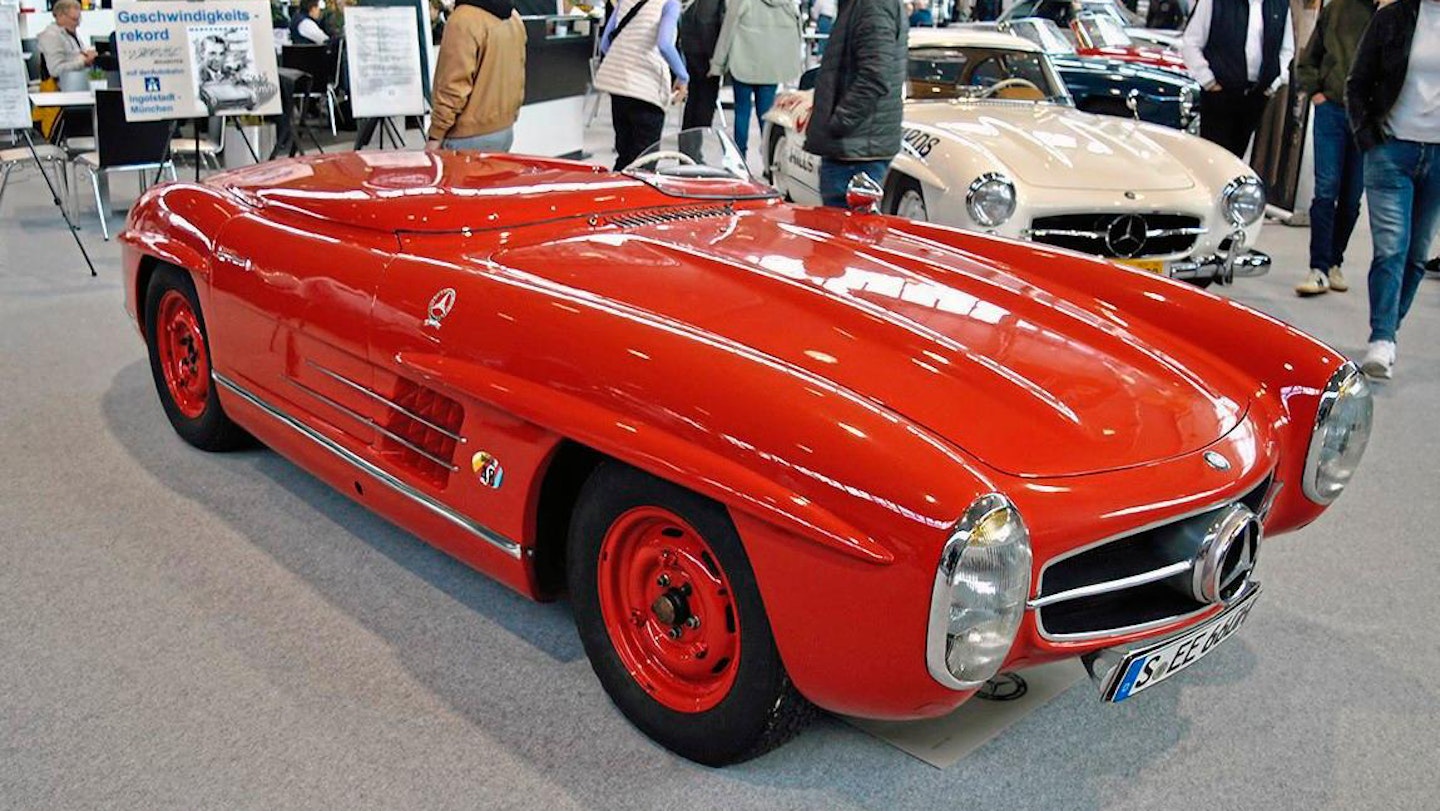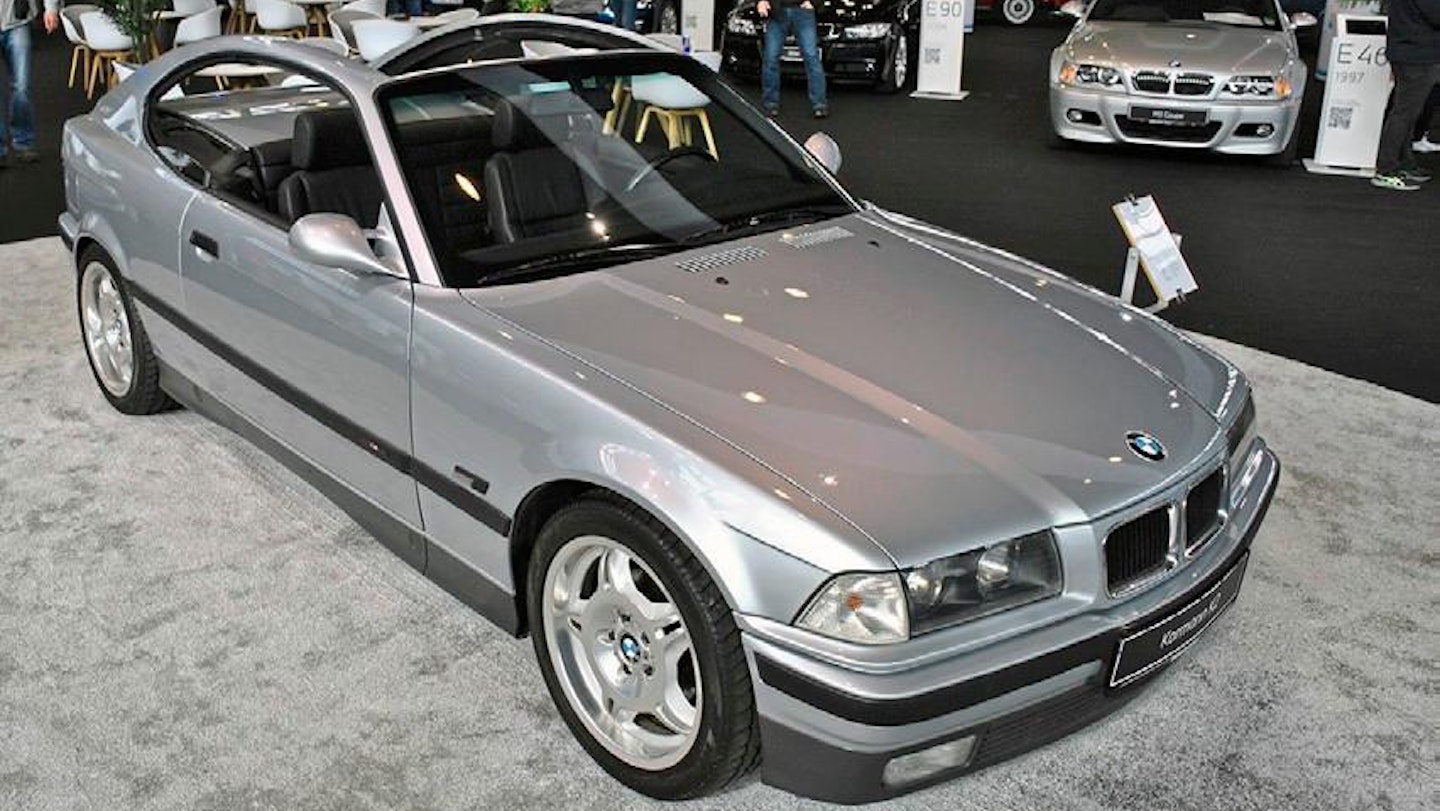[ MONTH IN CARS ] Events
Retro Classics impresses as organisers prepare to take on Techno Classica Essen

A flurry of significant major-manufacturer restoration-reveals defined this year’s Retro Classics Stuttgart. Its star has risen as Techno Classica Essen’s has fallen – Stuttgart is closer to the German motor industry’s Bavarian epicentre, after all. So much so that, from next year, the Stuttgart event’s organisers will take over the running of the longer-established northern show. But this year, Stuttgart was reminiscent of the Techno Classicas of old, with major German manufacturers booking out the complete spread of halls.
Mercedes-Benz 300SL Roadster

Hidden away for years in the collection of former Mercedes works driver Eugen Böhringer, this 300SL – Roadster Prototype number six – was once used to set speed records.
It began life in 1957 as part of Mercedes’ press fleet, sent over to the US and displayed at the Hotel Astoria in New York, before going on to San Francisco, then returning to Germany.
In 1958, it was used in a series of speed-record runs on the Munich-Ingolstadt autobahn, pitted against a Porsche 356 Carrera, a BMW 507, an MGA and a Mercedes-Benz 220SE.
Rudolf Uhlenhaut drove the car, trying multiple configurations – roof up and down, and windscreen replaced with fly screen – managing a winning 245kmh (152mph) with the latter.
From 1959 to 1961, victorious racers at Solitude were paraded round the track in the car, which was also used for racing at the time, clocking up 10 wins from 17 starts between 1960 and 1962 in the hands of Böhringer and Eberhard Mahle.
In 1963, Böhringer bought the car from Mercedes and kept it, noting before his death in 2013, ‘Once they’re in my house, they never leave.’
BMW 502 Roadster

On show outside BMW’s museum for the first time, this bizarre convertible formed part of an exhibition celebrating 50 years of the BMW 507.
‘It came about in 1954, after US importer Max Hoffman decided BMW should build a sports car to raise the marque’s image, using its existing V8-engined 502 saloon as a basis,’ said Jan Schmidt of BMW Mobile Tradition. ‘This prototype, devised by engineer and racing driver Ernst Loof, marked the origins of the 507.’ The car was styled by aerodynamicist Heinz Jacht, and despite winning a concours d’elegance at Bad Neuenahr when new, its styling was rejected by BMW’s board of directors. ‘So they brought in Albrecht Goertz to redesign it, and the 507 as we know it was the result,’ added Schmidt.
Porsche LMP2000

‘This is the first time this car has ever been shown at all,’ said Porsche Museum’s Paul Vogel of the racing prototype Porsche infamously cancelled in order to develop the first Cayenne SUV model, and the innards of which ended up forming the basis of the Carrera GT road car.
‘It was devised in the wake of Porsche’s 1998 Le Mans 24 Hours win,’ said Vogel. However, an impending rule change would render the controversial GT1 class – which required manufacturers to build at least one road-legal example of its sports prototypes – obsolete.
With this in mind, Porsche set to work on an open-cockpit Le Mans Prototype with an aim of returning to La Sarthe in 2000. ‘The carbon-fibre monocoque was designed in-house, but its production was outsourced,’ Vogel continued. ‘The V10 engine was actually based on a 700bhp prototype unit originally intended for a Formula One programme, but never used.
‘Unfortunately, at 822kg it was underweight for the class, so had to carry 78kg of ballast. Despite this, it set a new lap record at Porsche’s Weissach test track in November 1999, and computer simulation suggested it could lap Le Mans in three minutes 33 seconds.
‘After GT1 was cancelled, manufacturer entries for Le Mans fell short.’ BMW, Toyota, Mercedes and Nissan all pulled out of endurance racing, leaving the sector uncompetitive.
‘Cayenne development then tied up funds, so the plug was pulled on the racing programme, but the concept was recycled as the Carrera GT road car, built from 2004-2006. Obviously Porsche returned to Le Mans, but the LMP2000 never ran outside of the test track.’
Monteverdi Tiara V8

On show in Germany for the first time, this sole V8-powered survivor also marked the end of Monteverdi production. ‘It was based on a Mercedes 500SEL,’ said owner Oertli Balz. ‘Peter Monteverdi had a vision to create a super-luxury saloon by rebodying the front and rear of the S-class.’ Based on the long-wheelbase version, it also included a retrim in Italian leather and featured a TV set for rear-seat passengers.
‘Only three were built in 1982-3, of which just two are known to still exist,’ said Balz. ‘And this is the only one left with the 5.0-litre V8. The other survivor has a 3.8-litre straight-six. Sadly the other 5.0-litre was lost in a fire in 2016, along with a collection of 24 S-Classes.
‘This particular car was Peter Monteverdi’s partner Paul Berger’s car. Despite going to a great deal of effort, Monteverdi simply couldn’t secure any sales for the Tiara.’
In concept, the Tiara followed the Sierra, which Monteverdi based on a Plymouth Volare but altered more extensively, including fitting independent rear suspension. However, the main bulk of Monteverdi’s work by the early Eighties involved four-door Range Rover conversions. Once Land Rover brought out its own four-door in 1981, Monteverdi was left with nothing to sell, the Tiara being its last attempt at a new model. ‘I’ve had it since 2019, but this is its first time outside of Switzerland,’ concluded Balz.
BMW Karmann K2 prototype

‘This is the first time this car has ever been shown in public,’ said BMW Group Classic’s Stefan Hoffman of the K2 prototype. ‘It’s a very special car, the only one made. BMW has always been trying to find more variants for the 3 Series, and entrusted Karmann to devise a coupé based on the E36 Compact, using a 328i as a basis.’ It was built in 1994 – the first year of Compact production – but was only revealed in 1998, by Karmann itself rather than BMW.
‘BMW decided not to adopt it in the end,’ said Hoffman. ‘There was already a coupé in the range, and this three-position coupé-cabrioletpickup’s construction was just too expensive.’
The K2 was never formally shown, with just a few low-resolution photographs leaking in the intervening years, and it remained at Karmann’s HQ until its bankruptcy in 2010, when the K2 was acquired by BMW Group Classic.
Subscribe to Classic Cars today. Choose a Print+ Subscription and you'll get instant digital access and so much more. PLUS FREE UK delivery.
